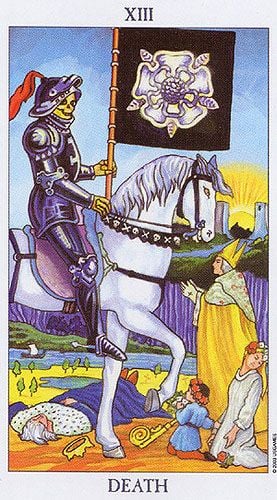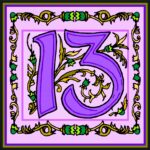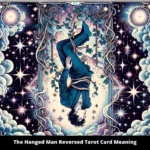The Death Tarot card, often misunderstood and shrouded in superstition, embodies transformative energies and the relentless cycle of life. When drawn in a reversed position, its implications shift drastically, imparting insights that resonate deeply with the concept of stagnation, resistance to change, and a poignant reflection on personal growth. The reversed Death card serves as a metaphorical chrysalis, representing an internal struggle that inhibits the burgeoning of transformative potential.
The visual imagery on the Death card is striking; a skeletal figure rides through a desolate landscape, symbolizing the inevitability of mortality and transition. But when reversed, this potent symbolism reveals a deeper introspection. It signifies an interruption in the natural flow of progression, akin to a river dammed, preventing the water from continuing its destined journey. Individuals may find themselves ensnared in the cobwebs of the past, clinging to old habits or relationships that no longer serve their higher selves.
In this state, the reversed Death card does not forecast physical demise; rather, it whispers of stagnation and the refusal to embrace life’s impermanence. The card is a nudge, urging one to confront the barriers constructed around their psyche—barriers that can be as insidious as the shadows lurking behind closed doors of the subconscious. In this way, it becomes an invitation to engage in a meticulous act of self-inquiry, challenging the complacency that breeds therein.
One intriguing aspect of the reversed Death card is its relationship with unresolved issues. Often, individuals may find themselves haunted by past decisions—echoes of regrets that reverberate through the corridors of their memory. This card illuminates the importance of confronting these shadows; it suggests that true liberation lies in the acceptance of one’s flaws and the unburdening of past grievances. By making peace with what has been, individuals can make way for the new, clearing the debris from their mental and emotional landscapes.
Further complicating the narrative, the reversed Death card can be linked to a pervasive fear of change. This fear, oftentimes debilitating, morphs into a self-imposed prison where comfort is preferred over uncertainty. The card emerges as a poignant reminder that change, while daunting, often paves the way for new opportunities and growth. It invites contemplation on the nature of fear itself—encouraging one to examine what lies beneath the surface. Is it the fear of failure? A trepidation regarding the unknown? Or perhaps it is a deeply ingrained belief that one is unworthy of the life they desire? Each of these questions serves to deconstruct the barriers held aloft by the reversed Death, revealing the underpinnings of one’s personal blockages.
In relationships, the reversed Death card can act as a litmus test, highlighting the dynamics at play. It may uncover toxic patterns—relationships that are no longer reciprocal or supportive. The card prompts individuals to assess whether they remain in such situations due to fear of solitude or change. Much like a flower yearning for sunlight, individuals must recognize their innate right to thrive in healthy environments. This card serves as a clarion call for relational honesty, encouraging open dialogues and authentic self-expression, fostering an environment where growth can be mutually beneficial.
Moreover, one must acknowledge the potential for stunted growth reflected by the reversed Death card. Even in situations where growth is desired, it may manifest tentatively, akin to seedlings pushing through hardened soil. This stagnation can lead to frustration, where aspirations feel perpetually out of reach. The reversed Death card entreats individuals to evaluate their goals, to consider whether they are rooted in reality or merely whimsical aspirations. It offers a chance to recalibrate intentions, reestablishing pathways towards self-fulfillment.
As a counterpoint to the theme of stagnation, the reversed Death card also emphasizes the importance of resilience. It reveals the underlying strength embedded within the process of navigating life’s labyrinthine challenges. Resilience is akin to the phoenix that rises from the ashes, a symbol of renewal and the power of rebirth. In facing the fears and vulnerabilities that accompany transitions, individuals can fortify their resolve, emerging with a deeper understanding of their own fortitude.
Surprisingly, the reversed Death card also beckons the possibility of a renaissance. It is essential to remember that the cessation of one stage often births the genesis of another. Thus, in its reversed form, the Death card can signal that while personal transformation may be eclipsed by challenges, the potential for change—however latent—lingers. The key lies in embracing this potential, mining the depths of one’s introspection to identify what new opportunities await just beyond the horizon.
Ultimately, the reversed Death Tarot card encapsulates a spectrum of meanings that arise from the essence of resistance and the theme of renewal. It challenges us not to fear the changes lurking within the shadows but instead to engage with them, fostering discussion, confronting our fears, and adopting a stance of acceptance. In this exploration, the essence of transformation becomes accessible, illuminating pathways that might have previously seemed obscured.
In conclusion, while the reversed Death card may initially strike trepidation, its core message is one of potential and inner journeying. It invites introspection and fosters an environment where growth becomes attainable. By confronting the barriers of stagnation, fear of change, and unresolved issues, individuals embark on a remarkable journey toward renewal—a journey that, despite its challenges, ultimately leads to enlightenment and personal fulfillment.









Leave a Comment